-
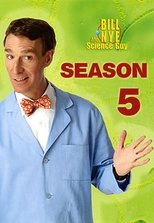
-
-
Bill Nye The Science Guy : Season 5
-
Air date: 19 Sep '97 - 20 episodesBill Nye the Science Guy is an educational television program that originally aired from September 10, 1993 to June 20, 1998, hosted by William "Bill" Nye and produced by Buena Vista Television. The show aired on PBS Kids and was also syndicated to local stations. Each of the 100 episodes aims to teach a specific topic in science to a preteen audience. The show is frequently used in schools as an education medium, and it still airs on some PBS stations for this reason. Created by comedian Ross Shafer and based on sketches on KING-TV's sketch program Almost Live!, Bill Nye the Science Guy was produced by Disney Educational Productions and KCTS-TV of Seattle. Bill Nye the Science Guy won nineteen Emmy Awards during its run.
-
-
List of Episodes (20)
-
Bill Nye The Science Guy (1993)

-
1. Forensics
19 Sep '97The color of your eyes, the shape of your nose, and the straightness (or curliness) of your hair depend on your genes. Not jeans the pants, but genes, the long strands of chemicals in your cells. Genes are like a blueprint for your body, and your cells follow the blueprint to build you. All living things have genes in their cells. You get your genes from your parents – half from your mom and half from your dad. Your parents got their genes from their parents, your grandparents. Living things
-
Bill Nye The Science Guy (1993)

-
2. Space Exploration
26 Sep '97Towers, teepees, castles, and condominiums – some kind of planning goes into all buildings, no matter how big or small. Architects are people who design buildings, and the areas around buildings. Usually architects draw on a computer or a big desk (a drawing board). The plans show the dimensions of all parts of a building. Architects try to design with the purpose of the building in mind, but even buildings used for the same thing can look very different.
-
Bill Nye The Science Guy (1993)

-
3. Genes
17 Oct '97Before food gets into your kitchen, before it even gets to the store, it’s on a farm. Almost everything we eat is grown on a farm, an area of land used to raise animals and plants. Farming nowadays can get pretty complicated. Farmers are scientists – agricultural scientists. Farmers work hard to keep their farms healthy. Soil is stirred up to get oxygen to the microorganisms that live in between the grains and to plant roots – that’s called tilling the soil to aerate it. Plants need to
-
Bill Nye The Science Guy (1993)
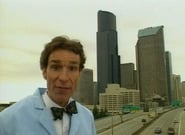
-
4. Architecture
24 Oct '97My, how you’ve grown! The popular exclamation from your Auntie may be no great revelation, but growing bigger is a part of life. In fact, it’s part of the whole cycle, or pattern, of human life that began with your birth. The different stages in life are called life cycles. Humans aren’t the only ones with life cycles. At first, you might think that you have nothing in common with a cactus in the desert, or a fish in the sea, or the mold in your gym shoe, but you do. You’re all alive.
-
Bill Nye The Science Guy (1993)
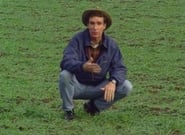
-
5. Farming
31 Oct '97Do-it-yourself science involves a question, observations, a hypothesis, and experimentation. You have probably come up with questions after you noticed something unusual. For instance, why do fingers get all pruny and wrinkled when I sit in the tub? The observation – shriveled fingertips – is the first step. Do-it-yourself science requires an eye for details surrounding your observations. Collecting related information helps you get to the next step, what scientists call a hypothesis, or
-
Bill Nye The Science Guy (1993)

-
6. Life Cycle
14 Nov '97Atoms are reeeeally small. They are so small that you can’t see them with just your eye. It takes as many as 10 million of them side-by-side to measure a single millimeter. In fact, atoms are the smallest pieces of “stuff” that are still considered “stuff.” If you take something and break it into tiny pieces, and then break it into tinier pieces, and keep going, the smallest part you’d be left with (and still have the same substance that you started with) is an atom. Atoms are the
-
Bill Nye The Science Guy (1993)

-
7. Do-It-Yourself Science
21 Nov '97Ocean exploration is a tricky, risky business since humans can’t naturally survive under the ocean. Ocean explorers are constantly inventing new tools to help them dive deep into the sea. Over the last few hundred years or so, and especially in the last few decades, we humans have come up with all kinds of new ways to study the ocean. Even so, the ocean remains largely unexplored. It’s huge, cold, salty, and deep. Ocean exploration helps us understand our planet, and may help us solve the
-
Bill Nye The Science Guy (1993)

-
8. Atoms and Molecules
28 Nov '97What do you get when you have a big hole in the ground and some water? Lakes and ponds. All lakes and ponds have one thing in common – they happen when a basin, or hole, forms, and then fills with water. A glacier may grind a long gulch, volcanoes and earthquakes may make a sinkhole, or engineers may build a dam – they can be human or beaver.
-
Bill Nye The Science Guy (1993)

-
9. Ocean Exploration
05 Dec '97How do noses work? Objects give off tiny amounts of tiny molecules into the air. When just a few of these molecules get up your nose, they dissolve in the mucus up there. Some molecules come into contact with special receptors on what’s called your “olfactory membranes.” Each nostril has a membrane, and each membrane is only about the size of a postage stamp. The membranes hold millions of receptor cells, each of which are ready to send messages to the brain about the molecules that go up
-
Bill Nye The Science Guy (1993)

-
10. Lakes & Ponds
21 Feb '98What do you get when you have a big hole in the ground and some water? Lakes and ponds. All lakes and ponds have one thing in common – they happen when a basin, or hole, forms, and then fills with water. A glacier may grind a long gulch, volcanoes and earthquakes may make a sinkhole, or engineers may build a dam – they can be human or beaver.
-
Bill Nye The Science Guy (1993)

-
11. Smell
28 Feb '98Fluids are cool; they ooze and swoosh. Whatever container you put a fluid in, that fluid will take the same shape. Milk poured into a pitcher forms to the shape of the pitcher. If you pour it into a glass, it takes the shape of the glass. You just can’t do that with a boulder. But with the right container, you could pour liquid rock from below the Earth’s crust. Fluids still act like fluids, even halfway to the center of the Earth.
-
Bill Nye The Science Guy (1993)

-
12. Caves
25 Apr '98Dirt, sand, and rock from the Earth’s surface gets blown, sliced, torn, swallowed and distributed all over the world. What was yesterday’s hill is tomorrow’s flat plain. The planet looks a lot different than it did when it formed four and a half billion years ago. The force of erosion, the slow wearing away of the land, has never ceased.
-
Bill Nye The Science Guy (1993)
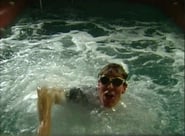
-
13. Fluids
02 May '98Outer space is full of stuff. We’re not just talking about planets and moons. There are some bits and pieces, too small to be noticed most of the time that float around and occasionally run into all those planets and moons. Comets and meteors are the big bits of dirt, rock and ice that inhabit our Universe. More than just high-speed space chunks, comets and meteors carry important information about the history of our Universe.
-
Bill Nye The Science Guy (1993)

-
14. Erosion
09 May '98Storms are big, loud, and often accompanied by rain, snow, sleet, or hail. Where do these wild, dangerous, and necessary tornadoes, hurricanes, and thunderstorms come from? Storms happen when huge different air masses collide. Along the border of these air masses, water vapor condenses into clouds, strong winds form, and the clouds rub against each other with the ground often becoming electrically charged waiting to send lightning bolts across the sky. What starts out as a placid summer day
-
Bill Nye The Science Guy (1993)
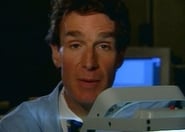
-
15. Comets and Meteors
16 May '98Did you know that the Concorde moves 300,000 times faster than a land snail? Or that a giant redwood can be as tall as a 35-story apartment building? The only reason we can make these comparisons is because people have measured these things. We don’t compare jets and snails every day, but we do rely on measurement constantly. When you take your temperature, you find out how it compares to the temperature of someone who is healthy. When you bake brownies, you’ll need to measure the
-
Bill Nye The Science Guy (1993)
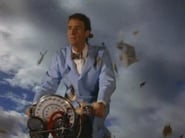
-
16. Storms
23 May '98Every time you look at something, hear something, touch something, smell something, or taste something, your brain collects a little information about the world around you. You may even have a scrapbook to store memories of some of that information. There’s a lot out there though. How do people sort out the valuable information from the not-so-valuable?
-
Bill Nye The Science Guy (1993)

-
17. Measurement
30 May '98Music is the art and science of expressing ideas and feelings through sound. A sad song can say more about how someone feels than most words, and a familiar song can make crowds clap together and feel like one happy family. Whatever the emotion, music seems to have a way to communicate it. The music we listen to today is the result of years of experimentation with sounds. As people figured out what they liked best, they invented instruments that could play their favorite tones and developed
-
Bill Nye The Science Guy (1993)

-
18. Patterns
06 Jun '98Things can appear to be moving, when they really aren’t. Sometimes an object might seem to be at rest, even when it is in motion. It’s all relative. Relative motion, that is. How things appear to move depends on how you, or any observer, happens to be moving. So, if you’re on a bus looking out a window into another bus, and your bus begins to back up slowly, you may think the other bus is moving forward, when really it’s not moving at all. That’s motion in motion. It happens all around
-
Bill Nye The Science Guy (1993)
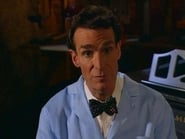
-
19. Science of Music
13 Jun '98
-
Bill Nye The Science Guy (1993)
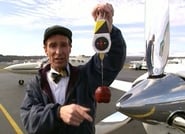
-
20. Motion
20 Jun '98
-


























